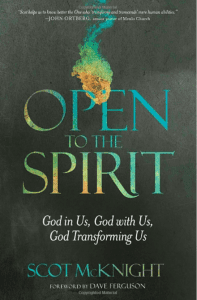 The baseball season is now up and running, the weather in Chicago has not been friendly to baseball, but the probabilities are that it will warm up and we’ll get some good weather. Probabilities is all I’ve got on this one.
The baseball season is now up and running, the weather in Chicago has not been friendly to baseball, but the probabilities are that it will warm up and we’ll get some good weather. Probabilities is all I’ve got on this one.
During this Easter season we await Pentecost.
A Pennsylvania school district incorporated a low-tech method of protecting teachers and students from attackers.
Millcreek Township School District in northwest Pennsylvania handed each of its teachers a 16-inch baseball bat Monday as a means to protect them and others, reports Erie Times-News. In March, Blue Mountain School District in Schuylkill County dished details of its safety plan, which includes equipping each classroom with a five-gallon bucket of rocks to “stone” a school shooter.
In the case of Millcreek, the bats are more “symbolic” but are free to be used to “fight,” district Superintendent William Hall told the Times-News and Erie News Now.
“It is the last resort,” Hall told Erie News Now. “But, it is an option and something we want people to be aware of.”
The teachers received their bats after a training on how to respond to school shootings, Erie News Now reported. The district ordered about 600 bats at a cost of about $1,800. They’ll be put in areas throughout the school, notes the Times-News.
“It’s to make people comfortable with the idea that they can attack and not simply go into hard lockdown and just hide, as we’d been told in our training up to this point,” said Jon Cacchione, president of the teachers union Millcreek Education Association, to the Times-News.
Maybe this is the worst idea, but it’s proven and proven and proven wrong. [HT: JS]
Great idea, just not timed well:
An Illinois fourth-grade student skipped school earlier this week to attend the Chicago Cubs’ home opener, arriving at Wrigley Field with a sign that read: “Skipping school… Shh! Don’t tell Principal Versluis.”
Then the student, Tucker Steckman, ran into the principal at the game.
“I saw him and I was kind of ducking down,” Wells Elementary School principal Pat Versluis told The Chicago Sun-Times on Tuesday. “I didn’t want him to see me either.”
Versluis told the newspaper that he called in sick Tuesday to attend the Cubs game with his son, a fifth-grader named Aiden. Steckman’s parents told the school that Steckman was sick so they could all attend the game, which Chicago lost to the Pittsburgh Pirates, 8-5.
Versluis told The Chicago Sun-Times that Steckman’s absence wouldn’t be held against him.
“Doesn’t bother me. He’s a great kid. He was student leader of the year,” Versluis said. “(And) I thought the sign was hilarious.”
Yes, the death of expertise is common today:
By definition, an expert is someone whose learning and experience lets them understand a subject deeper than you or I do (assuming we’re not an expert in that subject, too). The weird thing about having to write this essay at all is this: Who would have a problem with that? Doesn’t everyone want their brain surgery done by an expert surgeon rather than the guy who fixes their brakes? On the other hand, doesn’t everyone want their brakes fixed by an expert auto mechanic rather than a brain surgeon who has never fixed a flat? …
How did we reach this remarkable state of affairs? The answer to that question can be found in a new book by Tom Nichols titled The Death of Expertise: The Campaign Against Established Knowledge and Why it Matters. Nichols is a politically conservative professor of international relations at the U.S. War College. (He’s also a five-time undefeated Jeopardy! champion, so you don’t wanna mess with him.)
First, it’s important to note, Nichols is not arguing for a slavish adherence to anything that comes out of an expert’s mouth. In a wonderful essay that preceded the book, he tells us: “It’s true that experts can make mistakes, as disasters from thalidomide to the Challenger explosion tragically remind us.” Later he adds:
“Personally, I don’t think technocrats and intellectuals should rule the world: we had quite enough of that in the late 20th century, thank you, and it should be clear now that intellectualism makes for lousy policy without some sort of political common sense. Indeed, in an ideal world, experts are the servants, not the masters, of a democracy.”
But Nichols is profoundly troubled by the willful “know-nothing-ism” he sees around him. Its principle cause, he argues, are the new mechanisms that shape our discussions (i.e. the Internet and social media). He writes:
“There was once a time when participation in public debate, even in the pages of the local newspaper, required submission of a letter or an article, and that submission had to be written intelligently, pass editorial review, and stand with the author’s name attached… Now, anyone can bum rush the comments section of any major publication. Sometimes, that results in a free-for-all that spurs better thinking. Most of the time, however, it means that anyone can post anything they want, under any anonymous cover, and never have to defend their views or get called out for being wrong.”
Nichols also points to excesses of partisanship in politics, the weakening of expectations in schools and, finally, to human nature. The last cause, he says, is particularly troubling. As he puts it:
“Its called the Dunning-Kruger effect, which says, in sum, that the dumber you are, the more confident you are that you’re not actually dumb. And when you get invested in being aggressively dumb…well, the last thing you want to encounter are experts who disagree with you, and so you dismiss them in order to maintain your unreasonably high opinion of yourself.”
Part of the problem, says Nichols, is that while the democratization of knowledge is great, it’s threatened by the strange insistence that every opinion has equal weight. That’s an idea, he rightly says, that has nothing to do with democracy:
“Having equal rights does not mean having equal talents, equal abilities, or equal knowledge. It assuredly does not mean that ‘everyone’s opinion about anything is as good as anyone else’s.’ And yet, this is now enshrined as the credo of a fair number of people despite being obvious nonsense.”
Nichols’ perspective is an essential one if we are to begin digging ourselves out of the hole we find ourselves in. In a complex, technological world, most of us are experts at something. More importantly, being a true expert means having a healthy dose of humility. If you have really studied something and really gone deep into how it works, then you should come away knowing how much you don’t know. In a sense, that is the real definition of an expert — knowing the limits of one’s own knowledge. [HT: JS]
John M. Perkins, a leading evangelical voice on racial reconciliation, thinks that 50 years after the assassination of Martin Luther King Jr., the church is not focusing enough on unity.
“It scares me. We’re not talking about togetherness,” Perkins said. “That doesn’t improve the issue.”
Perkins, a minister who fought for civil rights in Mississippi, is hopeful for the future. But he believes that for reconciliation to happen, people must first affirm the dignity of all human beings and then move forward together.
“I believe that’s the gospel,” Perkins said. “God created man to reflect his image in the world and his likeness and then he said, ‘Don’t make no other god before me.’ What we’re doing is making ourselves god before God and each other.”
Perkins, 87, was in Nashville on Friday sharing that message, which is included in his new book, “One Blood.” The roughly 200-page work, co-written by Karen Waddles, is billed as Perkins’ parting words to the church on race. …
Perkins spoke in Memphis earlier this week at MLK50: Gospel Reflections from the Mountaintop, an evangelical conference that tackled racial unity as a gospel issue. The conference coincided with the anniversary of King’s assassination, which happened April 4, 1968, in Memphis.
From the conference stage, Perkins shared his message of unity alongside Russell Moore, the president of the Southern Baptist Convention’s Ethics & Religious Liberty Commission. The two men — one black and one white, but both from Mississippi — covered a wide variety of topics, from Perkins’ life story to how Christians engage in politics today.
“We’re supposed to be witnessing to the political system instead of thinking ways this political system can help us out of it. We have mixed up political reconciliation with spiritual reconciliation,” said Perkins, in a video of their joint presentation. “We’re confused.” [HT: KKNM]
Does education work? Well…
One idea on which everyone can agree, in other words, is that schools shape society. The reason so many of us spend so much energy on school reform is precisely because we think it matters. For some conservatives in the twentieth century, teaching kids evolution was dangerous because it threatened to take away their moral and religious compass. For others, teaching kids about sex was a bad idea because it tended to unhinge their self-control. And for yet others, teaching kids socialist ideas was obviously terrible because it would lead to the corruption of their morals and of the entire society.
Last night, the Hawaii students shared stories that helped puncture those school-reform assumptions. One student, for example, reported that he came to the realization that he was conservative in high school. He was guided to that realization by his favorite teacher. At first, I assumed that the teacher was a conservative, too, and inspired the student by reading Hayek and Burke and smoking a pipe. In fact, the student told us, his favorite teacher was a heart-on-her-sleeve liberal. She taught social studies in a progressive way, one that hoped to help students examine their own ideas and decide questions for themselves. In the student’s case, that meant he came to the realization that his ideas were apparently “conservative.” The left-y teacher, in other words, didn’t indoctrinate this student into leftism, but precisely the opposite.
Another Hawaii student told a very different story. She only realized that she was a liberal when she was teaching Sunday school at her church. The goal was to help young people deepen their religious faith, but it had the opposite effect on her. Instead of becoming more religious, teaching Sunday school convinced this student that her church was full of hooey.
What’s the takeaway? Once we hear the stories, it seems pretty obvious. School doesn’t really work the way we sometimes think it will. No matter what our politics, we can’t control the future of our students by teaching them X or Y or by keeping them away from Z or A. Students are not predictable, programmable outputs. They have their own ideas and backgrounds and sometimes our best-laid plans at shaping America’s future will come out in ways we didn’t predict. [HT: JS]
Some education is evidently not working:
NEW YORK — More than one-fifth of millennials in the U.S. — 22 percent — haven’t heard of, or aren’t sure if they’ve heard of, the Holocaust, according to a study published Thursday, on Israel’s Holocaust Remembrance Day. The study, which was commissioned by The Conference on Jewish Material Claims Against Germany and conducted by Schoen Consulting, also found that 11 percent of U.S. adults overall haven’t heard of the Holocaust or aren’t sure if they did.
Additionally, 41 percent of millennials believe two million Jews or fewer were killed during the Holocaust, the study found. Six million Jews were killed in World War II by Nazi Germany and its accomplices.
Two-thirds of millennials could not identify in the survey what Auschwitz was.
“The survey found there are critical gaps both in awareness of basic facts as well as detailed knowledge of the Holocaust,” said a news release on the findings.
A majority of American adults surveyed — 70 percent — agreed with a statement reading: “Fewer people seem to care about the Holocaust as much as they used to.” And 58 percent of Americans believe that something like the Holocaust could happen again, the survey found.
The study on Holocaust awareness and knowledge in the U.S. was conducted between February 23 and 27 and involved 1,350 interviews with American adults 18 and older.













